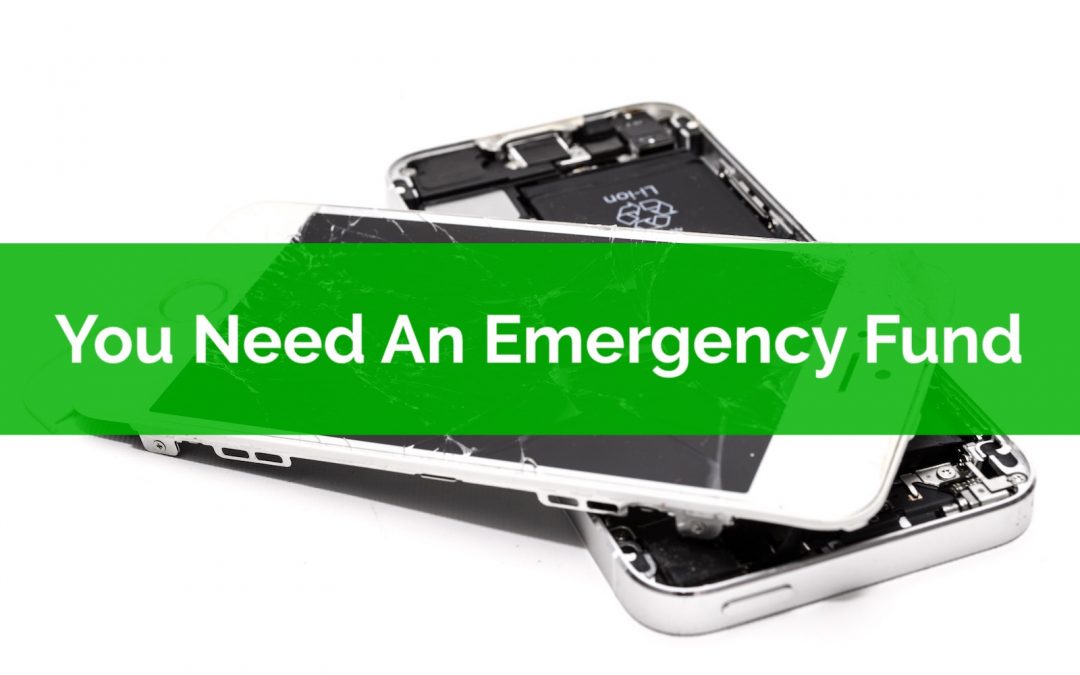“Welcome to the PlanEasy blog! We make personal finance easy.
Thanks for visiting.”
– Owen

Aiming For FIRE? Beware The Boring Middle
Financial Independence Retire Early (aka FIRE) is one of those big personal finance goals that has gotten a lot of attention recently. The idea of being financially independent, choosing when and if to work, is attractive for many people, especially when there is so much uncertainty in the world.
To be financially independent means that your investments (whether that be stocks, bonds, GICs, real estate etc) can provide enough income to cover annual expenses indefinitely. FIRE enthusiasts typically use the 4% rule as a guideline for how much income they can generate from their portfolio each year. The idea being that a person can draw 4% of their initial portfolio balance, adjusted for inflation each year, and have reasonably high chance of not running out of money after 30-years.
By using the 4% rule we can generate a rough target for FIRE. The basic idea is that you can take your annual expenses and multiply by 25 and that is your “FIRE number“. This is the amount needed in investments to safely retire early (although with low interest rates and low bond returns at the moment this rule is often thought to be too risky).
But despite it being a simple concept, reaching FIRE is a difficult task. It requires a high savings rate, low expenses, and lots of time.
FIRE is made easier with an above average income, which allows for a higher savings rate, but it is still a difficult task. Reaching FIRE means living well below your means for an extended period of time.
This combination of low spending, high savings, and a long time frame can lead to what’s known as “the boring middle”.
In this post we’ll briefly explain what FIRE is, why it’s so easy in the beginning, and why “the boring middle” could be a sign that there is an imbalance in the plan, one where the means may not justify the end.

How To Make A Great Debt Payoff Plan
In the world of personal finance, one of the best feelings is when you become debt free. Once you become debt free it’s like a weight has been lifted, you can breathe a sigh of relief, you’re free!
Creating a debt payoff plan is the fastest way to become debt free. It’s motivating. It’s provides a clear goal. It creates a clear payment plan to follow. But what makes a great debt payoff plan? There are a few important things that a great debt payoff plan should include.
Whether you’re paying off a bunch of credit card debt, or a big line of credit, or a student loan, or just want to see how long it will take to become mortgage free, a great debt payoff plan can make this happen.
What should be included in a great debt payoff plan? These six things are top of our list… (plus you’ll get a sneak peek at our new Debt Payoff Plan which is exclusively for clients to use when creating a financial plan with PlanEasy!)

You Need An Emergency Fund
Out of all the ‘best practices’ in personal finance, emergency funds are probably the simplest and most effective. There is nothing easier to set up and nothing that provides more peace of mind than an emergency fund.
Emergency funds are boring, they are simple, and they hopefully never get used.
The purpose behind an emergency fund is simple. An emergency fund should provide quick access to cash in the event of an emergency. An emergency should be something truly unexpected like a job loss, a health emergency, an unexpected repair, an accident etc. Using an emergency fund for an expected expense is NOT the right way to use an emergency fund (more on that later).
Emergency funds can also be called an ‘e-funds’, ‘rainy day’ funds, or ‘oh $h!t’ funds. Whatever you call it, the purpose is the same, to help ease the financial burden during an emergency.
Yet, as simple as emergency funds are, they sometimes get used incorrectly. In this post we explore what an emergency fund is, how to set one up, how large it should be, and what NOT to do with an emergency fund.

Owen Winkelmolen
Advice-only financial planner, CFP, and founder of PlanEasy.ca
“Welcome to the PlanEasy blog! We make personal finance easy.
Thanks for visiting.”
– Owen
New blog posts weekly!
Tax planning, benefit optimization, budgeting, family planning, retirement planning and more...

Aiming For FIRE? Beware The Boring Middle
Financial Independence Retire Early (aka FIRE) is one of those big personal finance goals that has gotten a lot of attention recently. The idea of being financially independent, choosing when and if to work, is attractive for many people, especially when there is so much uncertainty in the world.
To be financially independent means that your investments (whether that be stocks, bonds, GICs, real estate etc) can provide enough income to cover annual expenses indefinitely. FIRE enthusiasts typically use the 4% rule as a guideline for how much income they can generate from their portfolio each year. The idea being that a person can draw 4% of their initial portfolio balance, adjusted for inflation each year, and have reasonably high chance of not running out of money after 30-years.
By using the 4% rule we can generate a rough target for FIRE. The basic idea is that you can take your annual expenses and multiply by 25 and that is your “FIRE number“. This is the amount needed in investments to safely retire early (although with low interest rates and low bond returns at the moment this rule is often thought to be too risky).
But despite it being a simple concept, reaching FIRE is a difficult task. It requires a high savings rate, low expenses, and lots of time.
FIRE is made easier with an above average income, which allows for a higher savings rate, but it is still a difficult task. Reaching FIRE means living well below your means for an extended period of time.
This combination of low spending, high savings, and a long time frame can lead to what’s known as “the boring middle”.
In this post we’ll briefly explain what FIRE is, why it’s so easy in the beginning, and why “the boring middle” could be a sign that there is an imbalance in the plan, one where the means may not justify the end.

How To Make A Great Debt Payoff Plan
In the world of personal finance, one of the best feelings is when you become debt free. Once you become debt free it’s like a weight has been lifted, you can breathe a sigh of relief, you’re free!
Creating a debt payoff plan is the fastest way to become debt free. It’s motivating. It’s provides a clear goal. It creates a clear payment plan to follow. But what makes a great debt payoff plan? There are a few important things that a great debt payoff plan should include.
Whether you’re paying off a bunch of credit card debt, or a big line of credit, or a student loan, or just want to see how long it will take to become mortgage free, a great debt payoff plan can make this happen.
What should be included in a great debt payoff plan? These six things are top of our list… (plus you’ll get a sneak peek at our new Debt Payoff Plan which is exclusively for clients to use when creating a financial plan with PlanEasy!)

You Need An Emergency Fund
Out of all the ‘best practices’ in personal finance, emergency funds are probably the simplest and most effective. There is nothing easier to set up and nothing that provides more peace of mind than an emergency fund.
Emergency funds are boring, they are simple, and they hopefully never get used.
The purpose behind an emergency fund is simple. An emergency fund should provide quick access to cash in the event of an emergency. An emergency should be something truly unexpected like a job loss, a health emergency, an unexpected repair, an accident etc. Using an emergency fund for an expected expense is NOT the right way to use an emergency fund (more on that later).
Emergency funds can also be called an ‘e-funds’, ‘rainy day’ funds, or ‘oh $h!t’ funds. Whatever you call it, the purpose is the same, to help ease the financial burden during an emergency.
Yet, as simple as emergency funds are, they sometimes get used incorrectly. In this post we explore what an emergency fund is, how to set one up, how large it should be, and what NOT to do with an emergency fund.
Join over 250,000 people reading PlanEasy.ca each year. New blog posts weekly!
Tax planning, benefit optimization, budgeting, family planning, retirement planning and more...
Join over 250,000 people reading PlanEasy.ca each year. New blog posts weekly!
Tax planning, benefit optimization, budgeting, family planning, retirement planning and more...
